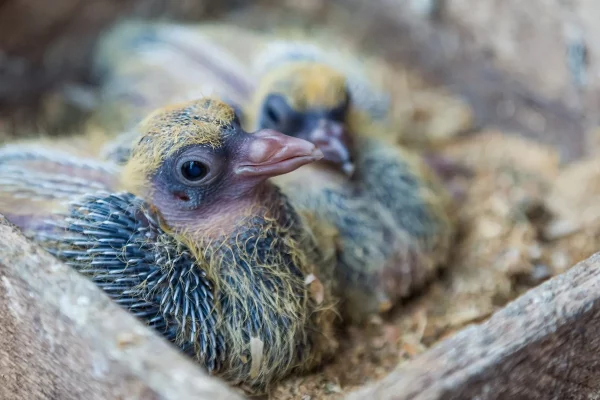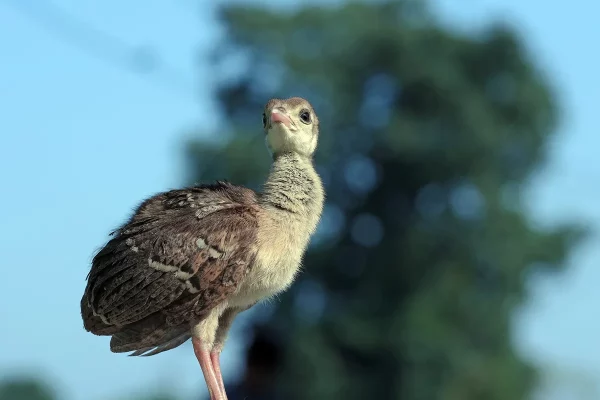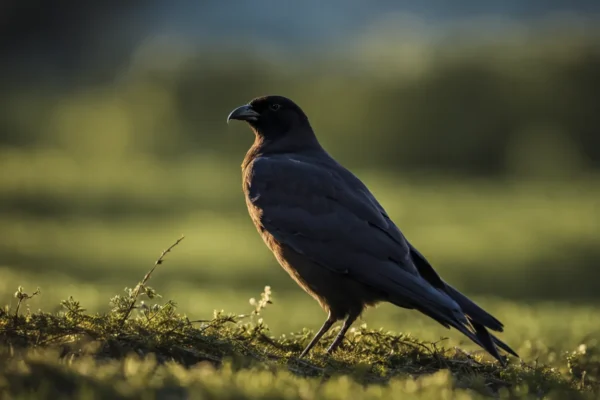Observing turtles in lakes, ponds, and marine habitats is intriguing. They’re so numerous in certain regions that locals refer to them as city pigeons! It’s possible that you’ve seen individuals feeding turtles or that you were inspired to feed a nearby turtle.
Is it OK to feed wild turtles? You can feed them, the answer is yes, but you have to make sure you give them the correct foods and keep other things out of their diet, such bread. The food that a turtle eats varies depending on its species, age, and environment. Thus, be careful to identify who you are feeding and what they need for a wholesome supplement before you offer it to them!
We’ll address several often asked issues about feeding wild turtles today, such as whether it’s OK to feed them, how to feed them, what to give various popular kinds, and—most importantly—what not to feed them. Note that wild turtles may have Salmonella germs, so avoid touching them! It is important to respect and care for wild animals, and it is best to avoid doing them any damage at all.
What to Feed Wild Turtles: A Concise Overview
You may feed wild turtles, but before you do, make sure you know the species and age of the turtle so you can provide the proper food.
Never handle wild turtles! Feed them from a distance and leave them where they are. While newborn turtles need more protein in their diet, adult turtles need more plant materials.
Most turtles are omnivores. Common foods you may give them are as follows:
insects such as grasshoppers, mealworms, crickets, and earthworms
vegetables such as turnip, dandelion, and collard greens; also includes squash, carrots, and peas.
berries, such as blueberries, blackberries, and strawberries, and fruits, such as melon, apples, pear, peaches, and grapes.
Turtle pellets for certain species may be obtained from pet shops or pond supply companies, depending on the species.
Foods to stay away from include:
Bread
prepared meals high in sugar and fat
dairy goods
vegetables such as spinach, chard, beetroot, and rhubarb that are rich in oxalic acid
Meat, either raw or seasoned
The lightning insect, or firefly
some toxic fruits and vegetables’ leaves (such as those of tomatoes, potatoes, and rhubarb)
Do Wild Turtles Need to Be Fed?
As long as you do thorough study, feeding wild turtles might seem to be an enjoyable and simple process! To ensure that the food you are giving the turtles meets their nutritional needs, be careful to identify the kind of turtle you are attempting to feed. The turtle’s age is also significant since younger turtles have different dietary needs than older ones.
Giving them the incorrect diet may seriously injure them and lead to conditions like metabolic bone disease and deformity of the shell.
If you come find a wild turtle, it can benefit immensely by your feeding it, particularly if its natural food source is scarce. These are wild animals, however, and they can easily get food on their own. A turtle that is having difficulties may just be elderly, ill, or damaged; adding supplements to their food could really help them, but it could not have any effect at all.
How to Give Wild Turtles Food
Never handle wild turtles! They may harbor Salmonella bacteria, which may seriously sicken people. Make sure you feed them from a distance; instead of feeding them by hand, leave the food out on the ground or in the water (based on the kind of turtle) for them to find on their own. Additionally, you should avoid approaching snapping turtles since their bites may be quite severe.
Any food you serve should be chopped into tiny, bite-sized pieces so that turtles may readily take them in their teeth and consume them. Take off the peel, thick skin, and stalks.
Similar to humans, turtles need to be given a balanced diet in moderation since too much of any one item is unhealthy for everyone! Make an effort to provide a variety of dishes, or serve them alternate days.
Additionally, it is recommended that you thoroughly wash your hands before setting out food for the turtles in order to shield them from any germs you may be harboring.
Sharing food with turtles is not recommended, even though it should be obvious! Remain clear of their leftovers and don’t share yours with them. This is to prevent contamination and for safety.
Food for Wild Turtles
Being omnivores, turtles consume both plant and animal materials. They are opportunists in general, taking advantage of any opportunity to eat. Stated differently, turtles are not picky eaters! But, this does not imply that you may give them any food.
In general, adult turtles need more plant material in their meals, but juvenile turtles need more animal matter.
The species and age of the individuals determine their needs. We’ll examine more closely at a few common species of turtles that you may come across and want to feed here. But first, let’s examine what a newborn turtle needs to eat.
Young Wild Turtles
Like many other young animals, newborn turtles need more protein in their diets than do adult turtles. This often indicates that they are more carnivorous than adult turtles and will devour a larger quantity of animal materials.
A newborn turtle’s food source may vary depending on its species, but in general, you may feed it tiny insects like grasshoppers and crickets, as well as mealworms and earthworms.
A little quantity of vegetable matter may be provided to newborn turtles if you have trouble getting them to eat insects. Carrots, squash, romaine lettuce, and collard greens are a few foods that are safe to eat. Fruits including melons, grapes, apples, and bananas are also edible to them.
Make sure to chop the fruits and vegetables into little pieces that are easy for turtles to chew on and swallow, and make sure to remove any rough skins or stems.
Untamed Box Turtles
Land turtles are known as box turtles, or box tortoises. Being one of the few land turtle species present in North America, the majority of species are water turtles.
Box turtles may safely eat the following foods:
Insects (grasshoppers, mealworms, crickets, and earthworms)
Vegetables (such as turnip and dandelion leaves, collard greens, mustard greens, and carrots, green beans, sweet potatoes, and okra).
Fruit (bananas, melons, cherries, peaches, apples, plums, pears, mango, and berries including mulberries and blackberries)
Water Turtles in the Wild
Compared to land turtles, freshwater turtles have distinct dietary requirements and so need different feeding practices. They are omnivores as well, however. Red-ear slider turtles, painted turtles, and snapping turtles are common species of aquatic turtles.
Food should be supplied to water turtles in the water since they live in the water. They may not approach food placed on land since this is where they are used to eating. As an alternative, they may pull any food that is on land into the water and still eat it.
Water turtles may safely eat the following foods:
veggies (leafy greens such as kale, watercress, dandelion, and mustard leaves) and vegetables (carrot, squash, peas, and
Fruit (strawberries, blueberries, blackberries, raspberries, bananas, papayas, guavas, grapes, melon, and pear, apple, and pear)
Water lettuce, duckweed, and water lily leaves are examples of aquatic plants.
Insects (larvae of water snails, earthworms, mealworms, cockroaches, crickets, grasshoppers, and dragonfly and beetle larvae)
Tadpoles, rose red minnows, and common guppies are examples of little creatures, albeit it might be challenging to locate and capture them on your own. These may be provided as food for pond turtles by some pond pet vendors.
Pellets: Depending on the kind of turtle you are feeding, pet shops and animal food suppliers may have pellets specifically designed for that species. Pellets will include the proper amount of protein, plant matter, and nutrients for the species of turtle.
For videos and advice on feeding wild snapping turtles, see this link!
Untamed Sea Turtles
It’s quite improbable that you’ll find yourself in a position where it’s possible to feed sea turtles. They are often very specialized eaters and are difficult for humans to feed. Certain species are herbivorous, whereas others are omnivorous or carnivorous. Let’s take a brief look at their usual diets, nevertheless.
Sea turtles that eat carnivores
Typically, jellyfish and soft-bodied invertebrates are the diet of leatherback turtles.
Moreover, Kemp’s Ridley turtles consume jellyfish. They eat shrimp, crabs, tiny fish, and other crustaceans.
A variety of items, such as crustaceans like crabs, snails, jellyfish, sea urchins, sponges, shrimp, and fish eggs, are consumed by loggerhead turtles.
Sea turtles that eat everything
Sea cucumbers, jellyfish, crabs, mollusks, and algae and soft coral are among the foods that flatback turtles eat.
Seaworms, algae, mollusks, and sponges are among the foods that hawksbill turtles consume.
Olive Ridley turtles typically consume marine plants and seaweed, although they will also consume snails, lobsters, prawns, and jellyfish.
Adult Herbivorous Sea Turtles The main foods eaten by green turtles are seaweed and seagrass.
You can see that feeding sea turtles items that are readily available to humans is a difficult task. If you come across a sea turtle that you believe requires assistance, it is advisable to get professional counsel. For information and guidance, contact a nearby wildlife rescue organization or hotline.
Things Not to Give Wild Turtles
Bread is the first item on the list of items you should never feed turtles. Don’t give bread to turtles! Although it may seem alluring and you may even see others doing it, bread is detrimental to turtles’ digestive systems. It is deficient in vital nutrients and contains a lot of bread and sugar, which these animals cannot adequately digest. Moreover, humans’ bread may cause turtles to get dependent on it as a fast and simple meal. This is risky because over time may cause distortion of the shell.
All foods heavy in sugar and wheat, as well as highly processed human foods, should generally be avoided. Foods that are oily are unhealthy too. Candy, chocolate, fries, doughnuts, onion rings, and other like items fall under this category.
Dairy products should also be avoided. Because they lack the enzymes necessary to break down lactose, turtles’ digestive systems are not suited to these diets. Turtles suffer from many health issues as a result of this.
Turtles may be eaten most leafy green meals, however they shouldn’t be fed plants that are rich in oxalic acid. Beetroot, rhubarb, spinach, and chard are examples of this. Because it prevents turtles from effectively absorbing calcium, oxalic acid is harmful. Like with other reptiles, turtles need a lot of calcium to prevent ailments like metabolic bone disease.
Raw meat should never be given to turtles since it may contain dangerous germs. Meat that has been seasoned is also unhealthy for turtles.
Turtles shouldn’t be fed fireflies, often known as lightning bugs, since they may be poisonous. Many animals, including turtles, are poisoned by the leaves of some crops. Potatoes, rhubarb, and tomatoes are a few of them.


![What Does “For the birds Mean”? [Explained]](https://birdsology.com/wp-content/uploads/2023/08/Flickr_-_Rainbirder_-_Yellow-billed_Oxpecker_Buphagus_africanus-600x400.jpg)



